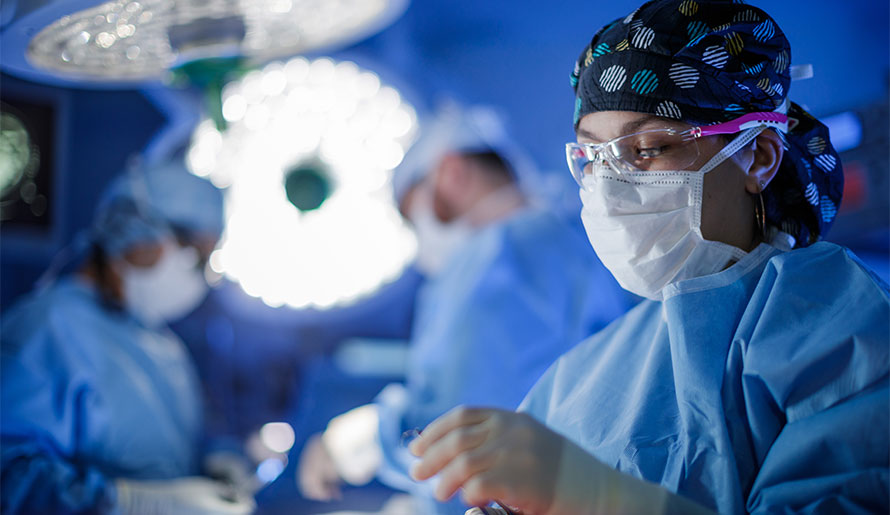
Innovative Margin Assessment Technology Presents Positive Outcomes in Breast Cancer Surgery
From the moment a patient is diagnosed with breast cancer, Moffitt Cancer Center's Breast Oncology Department physicians do everything they can to minimize its impact. Moffitt invests in the latest treatments that reduce invasiveness and look for opportunities to remove cancer cells while preserving the majority of breast tissue.
One new form of advanced technology currently in the testing stages is the Perimeter B-Series OCT with ImgAssist AI, which allows for better margin imaging during breast conservation procedures. Learn more below about this Optical Coherence Tomography (OCT) tool and how it could improve lumpectomy outcomes.
Get to Know the Current Lumpectomy Standard of Care
To understand how valuable this technology could be, it helps to look at the current best practices for completing a lumpectomy. Doctors have two goals with this procedure: completely removing cancerous cells while minimizing the amount of healthy tissue removed. If more tissue is removed than needed, it could change the shape of the breast and the position of the nipple. If cancerous cells are missed, patients may need to undergo additional surgery to remove residual cells in the breast tissue.
Dr. Marie Lee is the principal investigator in a clinical trial to better visualize surgical margins in order to remove breast cancer more effectively.
How Perimeter B-Series OCT with ImgAssist AI Works
Dr. Lee tests the effectiveness of the SELENE System on positive margin rates in breast lumpectomy surgery for cancer. This is frequently referred to as breast conservation surgery, as the goal is to remove only the cancerous lump rather than conducting a full mastectomy.
The Perimeter S-Series Optical Coherence Tomography (OCT) is a light-based imaging method that provides surgeons with a cross-sectional visualization of the tissue within 1-2 mm below the surface. This real-time view can give doctors a clearer view of the breast tissue in order to better target cancerous cells at the edge. This visualization is improved by the ImgAssist artificial intelligence (AI) technology, which highlights the edge or margin of the tumor.
With better real-time visualization of cancerous cells, doctors can take steps to remove them completely while preserving more healthy breast tissue.
Understanding the Potential Benefits of This Technology
There are multiple reasons why providers are excited about Dr. Lee's trial. Increasing the precisions of lumpectomies can reduce the impact of these operations on patients. Cancer patients can lose less healthy tissue, resulting in a minimal change to the shape and size of their breasts.
Clearer visualization also means more cancer cells may be removed, reducing the chances of re-operation and potentially the need for radiation therapy. Not only will this help patients beat cancer faster and improve their quality of life, but it may also reduce medical costs in the process.
Finally, the non-invasive methods of OCT with ImgAssist can improve the outcome of surgery without doing anything else to the patient in surgery, because the test is done only on the tissue that is removed.
What's Next for this Clinical Trial?
Dr. Lee is currently working as the principal investigator measuring the effectiveness of the SELENE system through her clinical trial. Healthcare providers who have recently diagnosed a patient with breast cancer can recommend them to this trial if they meet the inclusion criteria.
If you’d like to refer a patient to Moffitt Cancer Center, complete our online form or contact a physician liaison for assistance.
